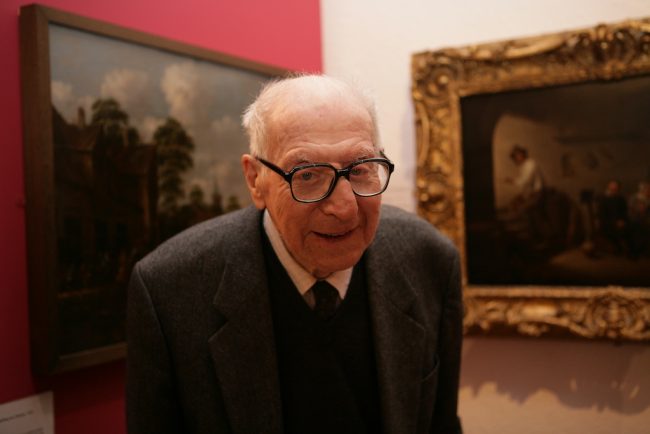Henry Rothschild (1913 – 2009)
 Before the explosion of craft shops in the late 1960’s, Henry Rothschild’s craft gallery in London was the leading post-war outlet for craftwork in Britain. Over the years, the major selling exhibitions he organised in Sloane Street and – from 1959 onwards – in Cambridge, launched the careers of some of Britain’s most important studio potters. Up until this period some artists would probably have stopped potting had it not been for his support. Most famously, he gave Hans Coper his first one-man show in 1958. He also had an important role in building up museum and education authority craft collections, being responsible, among others, for many pieces in the V&A collection.
Before the explosion of craft shops in the late 1960’s, Henry Rothschild’s craft gallery in London was the leading post-war outlet for craftwork in Britain. Over the years, the major selling exhibitions he organised in Sloane Street and – from 1959 onwards – in Cambridge, launched the careers of some of Britain’s most important studio potters. Up until this period some artists would probably have stopped potting had it not been for his support. Most famously, he gave Hans Coper his first one-man show in 1958. He also had an important role in building up museum and education authority craft collections, being responsible, among others, for many pieces in the V&A collection.
Early life
Born in Frankfurt into a family of industrialists, Henry had hoped to study art history or architecture, but his father insisted that he join the family business. Henry initially studied chemistry and physics at Frankfurt University. But when Hitler became Chancellor in 1933, Henry came to England and took a degree in natural sciences at Cambridge. He became a British subject in 1938, joined the Signal Corps of the Territorial Army and served as an ordnance officer in Italy during the war. While posted near Bologna, he discovered the traditional weavers and potters of Tuscany, and on his return to England in 1944, he began to search out their English equivalents.
Primavera
Henry opened the first Primavera in Sloane Street in 1946 with the declared intention of showing “the best things whether hand or machine made”. The gallery showed a diverse range of craft and design, and served as a beacon in the austere environment of post-war Britain. Alongside the few surviving traditional potters at the time, he exhibited the work of the newer artist potters: most notably, Bernard Leach, Michael Cardew and Lucie Rie. He also lent support to those makers that Leach disparagingly referred to as the “Picassiettes” (for example, William Newland and Stephen Sykes). He was one of the first to recognise and exhibit pieces by the radical new handbuilders at the time: Ruth Duckworth, Gillian Lowndes, Ian Godfrey, Ian Auld among others.

Pauline Rothschild
Henry opened the second Primavera shop in Cambridge in 1959 (the London branch eventually closing the following year). From this period date a remarkable series of selling exhibitions at Kettles Yard, and, unique among his peers, he also promoted British crafts across Germany.
The Study Collection
For over 50 years Henry slowly built up a personal collection of (principally) ceramics, personally reflecting his personal taste, and the much-handled collection was kept on open shelving in his and his wife Pauline’s small architect-designed house in Cambridge. Over 300 pieces of his personal collection are now on permanent display in the Henry Rothschild Study Centre at the Shipley Art Gallery in Gateshead.

